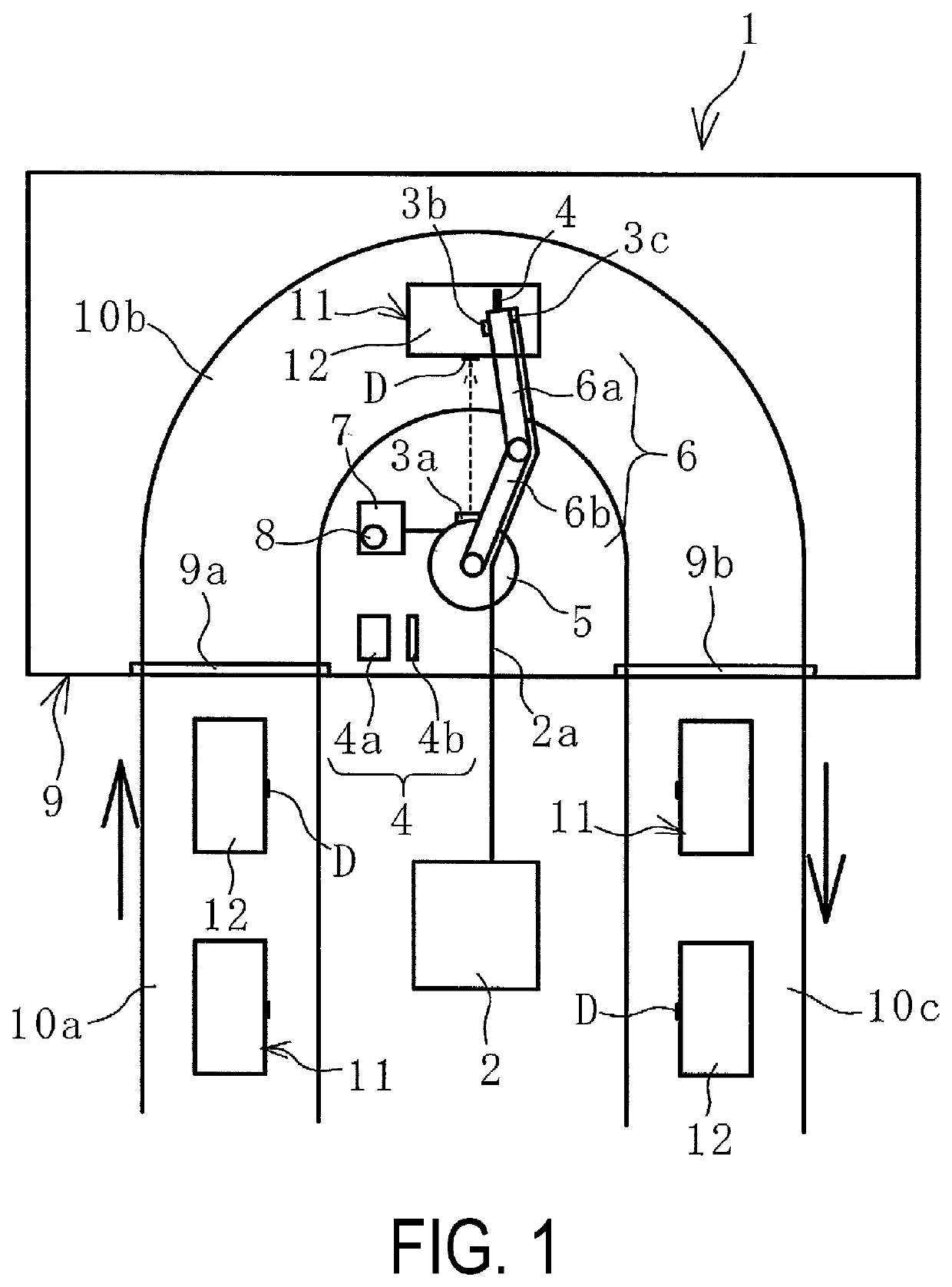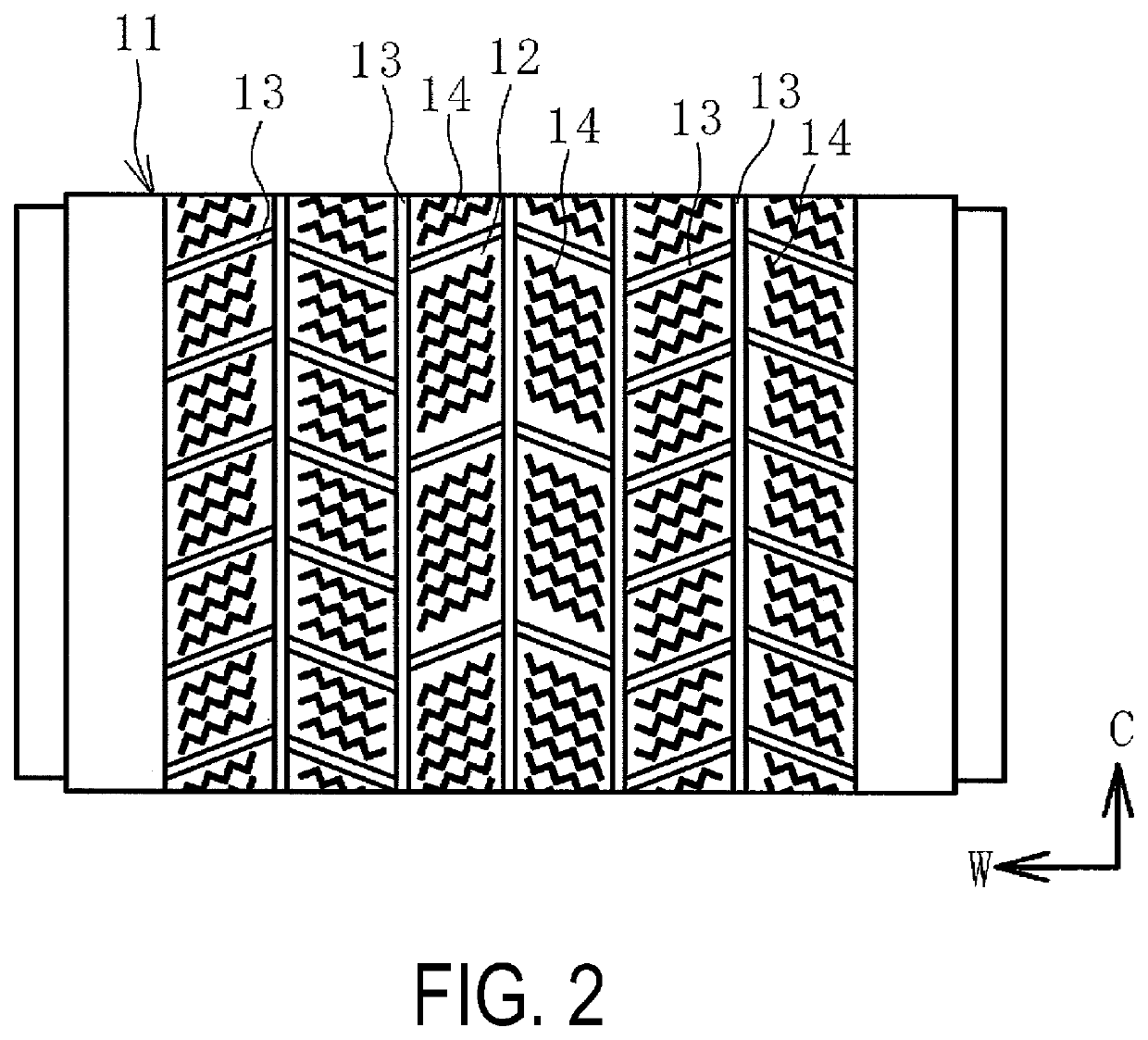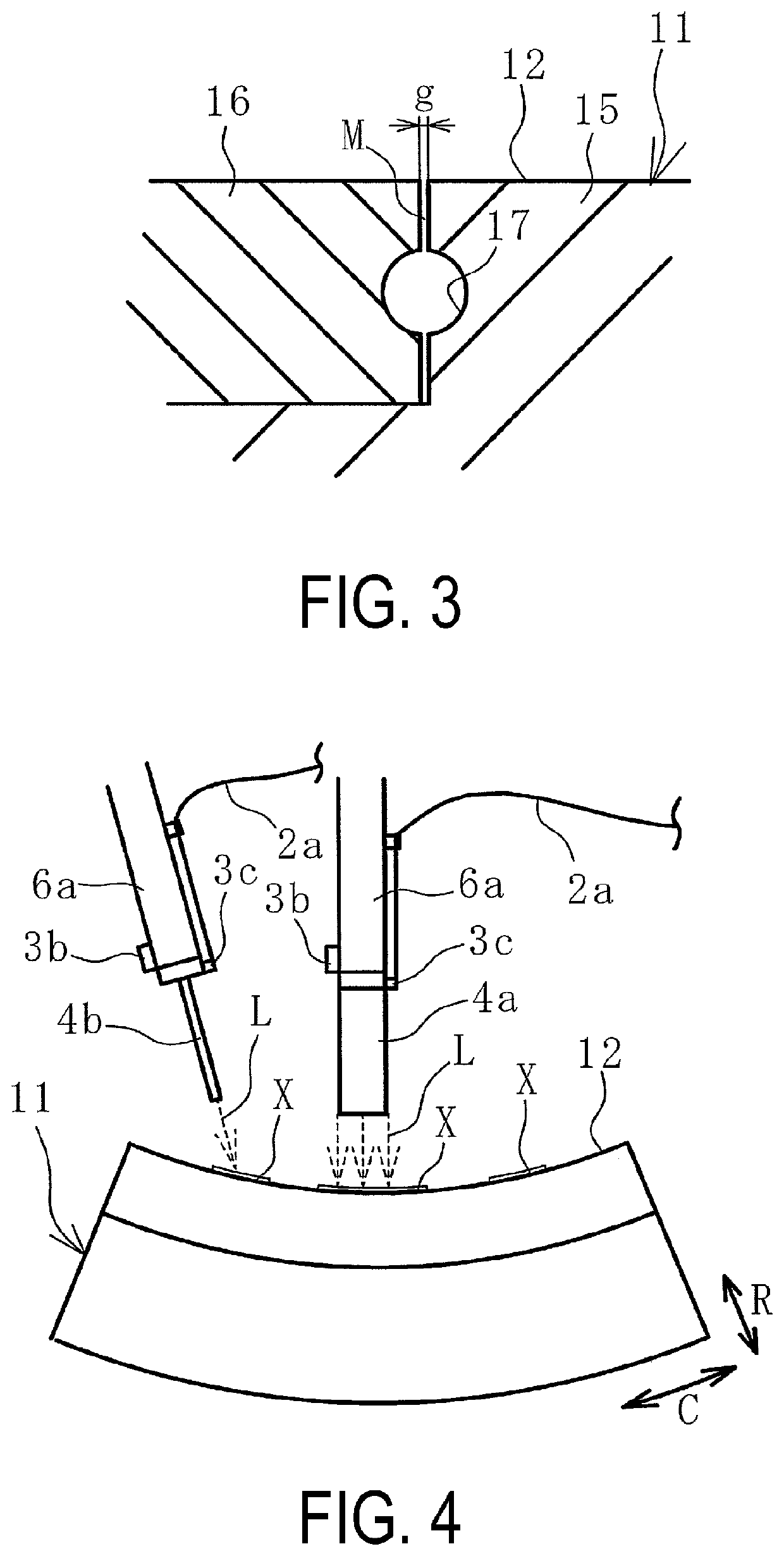Mold cleaning system
a cleaning system and mold technology, applied in the field of mold cleaning system, can solve the problems of affecting the quality of the products to be vulcanized, the area that the plasma cleaning method can clean in a unit time, and the operation becomes complicated, so as to prevent scratches on the molding surface, remove the dirt efficiently and cleanly, and prevent scratches.
- Summary
- Abstract
- Description
- Claims
- Application Information
AI Technical Summary
Benefits of technology
Problems solved by technology
Method used
Image
Examples
Embodiment Construction
[0019]A mold cleaning system of the present technology will now be described on the basis of the embodiments illustrated in the drawings.
[0020]Although a tire vulcanization mold is to be cleaned in the following description, the present technology can also be used to clean molds for vulcanizing other rubber products than tires.
[0021]A mold cleaning system 1 of the present technology illustrated in FIG. 1 is provided with a laser oscillator 2, a laser head 4, an arm 6 to which the laser head 4 is attached, a control device 7 that controls the motion of the arm 6, a database 8, and a mark detector 3a. In this embodiment, the mold cleaning system 1 is further provided with a camera 3b that obtains image data for a molding surface 12 of a mold 11, and a temperature sensor 3c that successively detects a temperature of the molding surface 12 that is irradiated with a laser beam L. The detection data detected by the mark detector 3a, the image data obtained by the camera 3b, and the temper...
PUM
| Property | Measurement | Unit |
|---|---|---|
| width | aaaaa | aaaaa |
| frequency | aaaaa | aaaaa |
| frequency | aaaaa | aaaaa |
Abstract
Description
Claims
Application Information
 Login to View More
Login to View More - R&D
- Intellectual Property
- Life Sciences
- Materials
- Tech Scout
- Unparalleled Data Quality
- Higher Quality Content
- 60% Fewer Hallucinations
Browse by: Latest US Patents, China's latest patents, Technical Efficacy Thesaurus, Application Domain, Technology Topic, Popular Technical Reports.
© 2025 PatSnap. All rights reserved.Legal|Privacy policy|Modern Slavery Act Transparency Statement|Sitemap|About US| Contact US: help@patsnap.com



